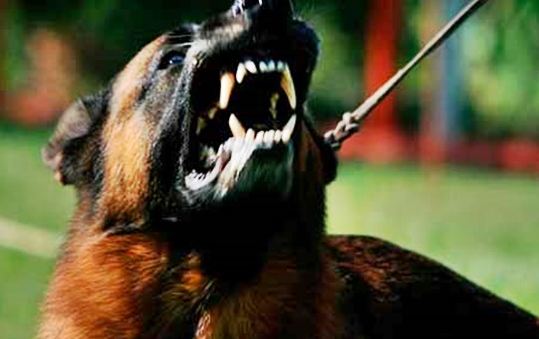Symptoms of Rabies in Dogs – Get inside the transmission, symptoms, and treatment of canine rabies, a disease that can also affect other species
Rabies is a virus, a zoonosis ( a disease that can be transmitted from animals to humans) currently almost eradicated, but even so, much feared. That’s because of the disease mortality rate, which affects only mammals, is almost 100%. The main transmitters are the wild animals such as bats, skunks, and monkeys, infected dogs, cats, and humans accidentally. Contagion occurs through the exchange of secretions, blood contact or bite. In dogs, the disease is known as canine rabies.

Canine rabies has some types and stages and is considered incurable, so it is essential to prevention through vaccination. Also, because dogs are, mostly, domestic animals are the main transmitters of the disease to humans. We must be aware of the symptoms to make a quick diagnosis and prevent the spread of the disease in the house.
Symptoms of Rabies in Dogs
The main symptoms are the sudden appearance of an aggression in animals, excessive salivation, and paralysis. In addition to the change in behavior, a happy, playful dog can become a quiet animal, demure and tired. These symptoms will show according to the phases of canine rabies.
The symptoms will only appear after an incubation period ranging from 3 to 6 weeks. After that these symptoms will depend on the stage of canine rabies. The first is prodromal, it is behavior change, the animal hides in dark places, have an unusual agitation in short time and greater disobedience, and eat unusual things like wood. The prodromal one of the stages of canine rabies only last 1 to 3 days.
The second phase of the disease comes with a more aggressive dog trying to bite everyone and everything. The animal can also auto attack, causing serious injury. During this period that lasts around one day the dog too much saliva, stopping to eat and drink. In the last phase, the animal suffers from generalized seizures and enters a state paralyzed and die within 48 hours.
Forms of canine rabies
Canine rabies can happen in two ways, the furious anger, anger changes and intestinal anger. Symptoms may vary according to each shape.
Furious anger
The furious anger is the most common. The dog barks too much and ends up fan. Agitation, aggression and drooling foam, convulsions and paralysis are the main features. An animal with furious anger has around 4-7 days of life only.
Anger changes
As its name implies, in anger changes the dog becomes more calm and melancholy. In it the animal does not present agitation, does not bark much and not attacking, just tends to be isolated in the shadows, do not answer the call and stop eating and drinking. A rabid animal also changes suffer from paralysis.
Intestinal anger
Intestinal anger is the rarest of the existing forms of canine rabies. In it the dog does not present any of the most common symptoms of rabies, or paralysis. The animal will have frequent vomiting and cramps to death. An animal with intestinal anger does not live more than three days.
Rabies vaccine
Vaccination against canine rabies must be made from and only from the fourth month of life of the puppy. The reinforcement must be done one by one year after the first dose. This rule also serves for cats can contract feline rabies.
